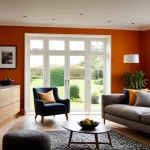Essential Principles for Designing a Child-Friendly Space in a UK Home
Creating a child-friendly home design UK requires prioritising safety, accessibility, and adaptability. Safety is paramount; spaces must prevent common hazards such as sharp edges or unstable furniture. Accessibility means designing rooms where children of various ages can move freely and interact independently, fostering confidence and comfort.
In UK homes, layouts can vary widely, with compact spaces being common. Practical family home planning embraces these constraints by incorporating flexible zones that evolve as children grow. For example, using furniture that adapts from toddler to older child stages helps accommodate changing needs without costly renovations.
Topic to read : How can you effectively use color to enhance UK home spaces?
Age-appropriate design elements are also crucial. Toddlers benefit from soft, tactile materials and low storage, while older children can have more personalised, stimulating environments with shelves at eye level and study areas. Incorporating colours and textures suited to developmental stages supports cognitive and emotional growth.
By combining safety standards with thoughtful planning focused on UK property types, you create a nurturing environment that balances function and fun. These principles form the foundation of creating safe spaces for children that grow with them and support family harmony.
In the same genre : What are essential tips for first-time UK home buyers?
Step-by-Step Guidance on Planning Your Space
Planning child-friendly rooms in UK homes starts with a clear assessment of available space. Many UK properties face size constraints, making UK home space planning essential to ensure comfort and functionality. Begin by establishing distinct zones for play, study, and rest—allowing children to develop routines and independence.
Involving children in the design process tailors the space to their tastes and needs. Asking questions like “What activities do you enjoy?” or “Which colours make you feel happy?” helps create personalised areas that reflect their personalities. This engagement also fosters respect for the space, encouraging children to care for their environment.
Maximising space in small UK homes demands creativity. Use modular furniture or flexible layouts to convert rooms between play and study easily. For instance, a fold-away desk or stackable seating can transform a playroom into a homework zone with minimal effort.
By thoughtfully planning child-friendly rooms and embracing flexibility, family interiors become both practical and engaging, supporting children’s growth while adapting to changing needs. Effective space planning is not only about room size but how each area supports daily family life.


